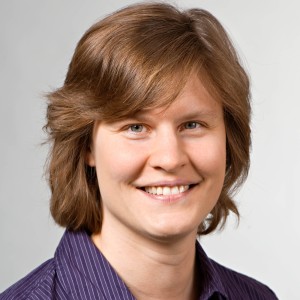
Spectral Analysis of the Quantum Random Energy Model
C. Manai, S. Warzel
Communications in Mathematical Physics 48 (2023).
The quantum random energy model (QREM) is a random matrix of Anderson-type which describes effects of a transversal magnetic field on Derrida's spin glass. The model exhibits a glass phase as well as a classical and a quantum paramagnetic phase. We analyze in detail the low-energy spectrum and establish a localization-delocalization transition for the corresponding eigenvectors of the QREM. Based on a combination of random matrix and operator techniques as well as insights in the random geometry, we derive next-to-leading order asymptotics for the ground-state energy and eigenvectors in all regimes of the parameter space. Based on this, we also deduce the next-to-leading order of the free energy, which turns out to be deterministic and on order one in the system size in all phases of the QREM. As a result, we determine the nature of the fluctuations of the free energy in the spin glass regime.

A Bulk Spectral Gap in the Presence of Edge States for a Truncated Pseudopotential
S. Warzel, A. Young
Annales Henri Poincare 24 (1), 133-178 (2023).
We study the low-energy properties of a truncated Haldane pseudopotential with maximal half filling, which describes a strongly correlated system of spinless bosons in a cylinder geometry. For this Hamiltonian with either open or periodic boundary conditions, we prove a spectral gap above the highly degenerate ground-state space which is uniform in the volume and particle number. Our proofs rely on identifying invariant subspaces to which we apply gap-estimate methods previously developed only for quantum spin Hamiltonians. In the case of open boundary conditions, the lower bound on the spectral gap accurately reflects the presence of edge states, which do not persist into the bulk. Customizing the gap technique to the invariant subspace, we avoid the edge states and establish a more precise estimate on the bulk gap in the case of periodic boundary conditions.

Trajectory phase transitions in non-interacting systems: all-to-all dynamics and the random energy model
J. P. Garrahan, C. Manai, S. Warzel
Philosophical Transactions of the Royal Society a-Mathematical Physical and Engineering Sciences 381 (2241), 20210415 (2023).
We study the fluctuations of time-additive random observables in the stochastic dynamics of a system of N non-interacting Ising spins. We mainly consider the case of all-to-all dynamics where transitions are possible between any two spin configurations with uniform rates. We show that the cumulant generating function of the time-integral of a normally distributed quenched random function of configurations, i.e. the energy function of the random energy model (REM), has a phase transition in the large N limit for trajectories of any time extent. We prove this by determining the exact limit of the scaled cumulant generating function. This is accomplished by connecting the dynamical problem to a spectral analysis of the all-to-all quantum REM. We also discuss finite N corrections as observed in numerical simulations. This article is part of the theme issue 'Quantum annealing and computation: challenges and perspectives'.

The de Almeida-Thouless Line in Hierarchical Quantum Spin Glasses
C. Manai, S. Warzel
Journal of Statistical Physics 186 (1), 14 (2022).
We determine explicitly and discuss in detail the effects of the joint presence of a longitudinal and a transversal (random) magnetic field on the phases of the Random Energy Model and its hierarchical generalization, the GREM. Our results extent known results both in the classical case of vanishing transversal field and in the quantum case for vanishing longitudinal field. Following Derrida and Gardner, we argue that the longitudinal field has to be implemented hierarchically also in the Quantum GREM. We show that this ensures the shrinking of the spin glass phase in the presence of the magnetic fields as is also expected for the Quantum Sherrington-Kirkpatrick model.

Existence of Replica-Symmetry Breaking in Quantum Glasses
H. Leschke, C. Manai, R. Ruder, S. Warzel
Physical Review Letters 127 (20), 207204 (2021).
"By controlling quantum fluctuations via the Falk-Bruch inequality we give the first rigorous argument for the existence of a spin-glass phase in the quantum Sherrington-Kirkpatrick model with a ""transverse"" magnetic field if the temperature and the field are sufficiently low. The argument also applies to the generalization of the model with multispin interactions, sometimes dubbed as the transverse p-spin model."

Rare thermal bubbles at the many-body localization transition from the Fock space point of view
G. De Tomasi, I. M. Khaymovich, F. Pollmann, S. Warzel
Physical Review B 104 (2), 24202 (2021).
In this paper we study the many-body localization (MBL) transition and relate it to the eigenstate structure in the Fock space. Besides the standard entanglement and multifractal probes, we introduce the radial probability distribution of eigenstate coefficients with respect to the Hamming distance in the Fock space and relate the cumulants of this distribution to the properties of the quasilocal integrals of motion in the MBL phase. We demonstrate nonself-averaging property of the many-body fractal dimension D-q and directly relate it to the jump of D-q as well as of the localization length of the integrals of motion at the MBL transition. We provide an example of the continuous many-body transition confirming the above relation via the self-averaging of D-q in the whole range of parameters. Introducing a simple toy model, which hosts ergodic thermal bubbles, we give analytical evidences both in standard probes and in terms of newly introduced radial probability distribution that the MBL transition in the Fock space is consistent with the avalanche mechanism for delocalization, i.e., the Kosterlitz-Thouless scenario. Thus, we show that the MBL transition can been seen as a transition between ergodic states to nonergodic extended states and put the upper bound for the disorder scaling for the genuine Anderson localization transition with respect to the noninteracting case.

Spectral Gaps and Incompressibility in a nu=1/3 Fractional Quantum Hall System
B. Nachtergaele, S. Warzel, A. Young
Communications in Mathematical Physics 383 (2), 1093-1149 (2021).
We study an effective Hamiltonian for the standard nu=1/3 ractional quantum Hall system in the thin cylinder regime. We give a complete description of its ground state space in terms of what we call Fragmented Matrix Product States, which are labeled by a certain family of tilings of the one-dimensional lattice. We then prove that the model has a spectral gap above the ground states for a range of coupling constants that includes physical values. As a consequence of the gap we establish the incompressibility of the fractional quantum Hall states. We also show that all the ground states labeled by a tiling have a finite correlation length, for which we give an upper bound. We demonstrate by example, however, that not all superpositions of tiling states have exponential decay of correlations.

The quantum random energy model as a limit of p-spin interactions
C. Manai, S. Warzel
Reviews in Mathematical Physics 33 (1), 2060013 (2021).
We consider the free energy of a mean-field quantum spin glass described by a p-spin interaction and a transversal magnetic field. Recent rigorous results for the case p = infinity, i.e. the quantum random energy model (QREM), are reviewed. We show that the free energy of the p-spin model converges in a joint thermodynamic and p -> infinity limit to the free energy of the QREM.

Low-complexity eigenstates of a nu=1/3 fractional quantum Hall system
B. Nachtergaele, S. Warzel, A. Young
Journal of Physics a-Mathematical and Theoretical 54 (1), 01lt01 (2021).
We identify the ground-state of a truncated version of Haldane's pseudo-potential Hamiltonian in the thin cylinder geometry as being composed of exponentially many fragmented matrix product states. These states are constructed by lattice tilings and their properties are discussed. We also report on a proof of a spectral gap, which implies the incompressibility of the underlying fractional quantum Hall liquid at maximal filling nu = 1/3. Low-energy excitations and an extensive number of many-body scars at positive energy density, but nevertheless low complexity, are also identified using the concept of tilings.

Phase Diagram of the Quantum Random Energy Model
C. Manai, S. Warzel
Journal of Statistical Physics 180 (1-6), 654-664 (2020).
We prove Goldschmidt's formula (Goldschmidt in Phys Rev B 47:4858-4861, 1990) for the free energy of the quantum random energy model. In particular, we verify the location of the first order and the freezing transition in the phase diagram. The proof is based on a combination of variational methods on the one hand, and bounds on the size of percolation clusters of large-deviation configurations in combination with simple spectral bounds on the hypercube's adjacency matrix on the other hand.

Dimerization and Neel Order in Different Quantum Spin Chains Through a Shared Loop Representation
M. Aizenman, H. Duminil-Copin, S. Warzel
Annales Henri Poincare 21 (8), 2737-2774 (2020).
The ground-states of the spin-S antiferromagnetic chain H-AF with a projection-based interaction and the spin-1/2 XXZ-chain H-XXZ at anisotropy parameter Delta = cosh(lambda) share a common loop representation in terms of a two-dimensional functional integral which is similar to the classical planar Q-state Potts model at root Q = 2S + 1 = 2 cosh(lambda). The multifaceted relation is used here to directly relate the distinct forms of translation symmetry breaking which are manifested in the ground-states of these two models: dimerization for H-AF at all S > 1/2, and N ' eel order for H-XXZ at lambda > 0. The results presented include: (i) a translation to the above quantum spin systems of the results which were recently proven by Duminil-Copin-Li-Manolescu for a broad class of two-dimensional random-cluster models, and (ii) a short proof of the symmetry breaking in a manner similar to the recent structural proof by Ray-Spinka of the discontinuity of the phase transition for Q > 4. Altogether, the quantum manifestation of the change between Q = 4 and Q > 4 is a transition from a gapless ground-state to a pair of gapped and extensively distinct ground-states.

Random characteristics for Wigner matrices
Soosten, S. Warzel
Electronic Communications in Probability 24, 75 (2019).
We extend the random characteristics approach to Wigner matrices whose entries are not required to have a normal distribution. As an application, we give a simple and fully dynamical proof of the weak local semicircle law in the bulk.

Delocalization and Continuous Spectrum for Ultrametric Random Operators
P. von Soosten, S. Warzel
Annales Henri Poincare 20 (9), 2877-2898 (2019).
This paper studies the delocalized regime of an ultrametric random operator whose independent entries have variances decaying in a suitable hierarchical metric on N. When the decay rate of the off-diagonal variances is sufficiently slow, we prove that the spectral measures are uniformly theta-Holder continuous for all theta is an element of (0, 1). In finite volumes, we prove that the corresponding ultrametric random matrices have completely extended eigenfunctions and that the local eigenvalue statistics converge in the Wigner-Dyson-Mehta universality class.

Bounds on the bipartite entanglement entropy for oscillator systems with or without disorder
V. Beaud, J. Sieber, S. Warzel
Journal of Physics a-Mathematical and Theoretical 52 (23), 235202 (2019).
We give a direct alternative proof of an area law for the entanglement entropy of the ground state of disordered oscillator systems-a result due to Nachtergaele et al (2013 J. Math. Phys. 54 042110). Instead of studying the logarithmic negativity, we invoke the explicit formula for the entanglement entropy of Gaussian states to derive the upper bound. We also contrast this area law in the disordered case with divergent lower bounds on the entanglement entropy of the ground state of one-dimensional ordered oscillator chains.
